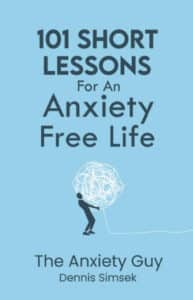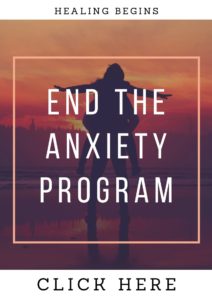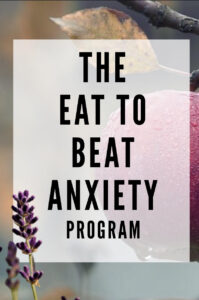The natural response of one’s body towards stress is manifested by anxiety, which is why we are looking at the different types of anxiety disorders today. It is a feeling of nervousness, uneasiness, and apprehension about what may happen next. For instance, some of the common scenarios that can make a person anxious include giving a speech, performing on stage, or giving a job interview.
So, it is natural to be anxious.
However, if these feelings of anxiety become unrealistically common as a part of your personality, and last for more than six months at a stretch; then it can be classified as an anxiety disorder.
Normally anxiety is something that comes and then goes when you adjust yourself to a new, unknown situation. But when the feelings of uncertainty and nervousness supersede your day-to-day activity and stop you from doing things that you normally do, then it becomes an anxiety disorder.
These are the most common types of anxiety disorders that can affect anyone, at any age
1) Panic Disorder – When you experience this kind of anxiety, you get sudden, intense feelings of panic or extreme fear (here’s a YouTube video that will show you what NOT to do during a panic attack). Panic attacks usually need a trigger (conscious or unconscious), a situation that you have a morbid fear of. Panic disorders set off unexpectedly most of the time and make you experience the following anxiety symptoms…
- Heart palpitations (you may feel your heart pounding)
- The feeling of choking (you may feel that you are getting a heart attack)
- Chest pain
- Perspiration
- Feeling of choking
- Extreme confusion
People who suffer from panic disorders tend to dwell on the next panic attack and take major steps to avoid any kind of confrontation or situation which may cause another attack. By reframing the experience however you will find it unnecessary to avoid any future triggers again, but rather feel a neutral feeling around them.
2) Generalized Anxiety Disorders – You spend most part of the day thinking unrealistically about what bad can happen to you, when there is nothing to trigger those emotions. In this scenario, you may be constantly worrying about your health, education, relationships, career, financial status, etc.
There is also a tendency to link these topics together and move worry from one aspect to the other. Some of the observable symptoms of Generalized Anxiety Disorder includes restlessness, feeling tired easily, getting irritable, inability to sleep properly and difficulty in concentration.
3) Phobia – This type of anxiety is marked by an excessive fear about a certain situation, object or activity. The fear in this case, is disproportionate or exaggerated compared to the actual danger from that particular situation, object or activity. Some examples of phobia include fear of flying, heights, getting injections, blood or certain animals like snakes, dogs, lizards; etc.
4) Social Anxiety Disorder – This is a form of anxiety in which an individual fears about being judged by other people, especially in social situations. They have exaggerated fears that people will evaluate them and laugh at them. This worry stops a person from interacting with people in a social environment like an office or school.
5) Separation Anxiety Disorder – This is more commonly seen in children and early teens, who worry about being separated from their parents. Though it is seen a lot in pre-schoolers, it can also happen in older children. Some of the symptoms include excessive crying, tantrums, poor academic scores, refusing to sleep alone, not being able to get along with other children, and nightmares.
6) Obsessive Compulsive Disorder – This type of anxiety is marked by repetitive irrational thoughts that make a person do the same thing over and over again. It is natural for a person to double-check if she has locked the house door properly, but that is not exactly OCD. This behavior has a person doing things repeatedly even after the job has been done properly. So, even if a person doesn’t want to, he or she will do a certain thing again just because it has become a part of his ritual in their mind.
7) Illness Anxiety Disorder (health anxiety) – Also known medically as ‘hypochondria’, it is marked by a person’s imagining in his mind about a certain illness. It can also be a person assuming that he or she has a major illness on the face of minor symptoms, despite assurances given by a medical professional that there is nothing to worry about. Such a person will constantly think about a major illness, and insist on taking medical tests over and over, and keep checking online for symptoms, for a prolonged amount of time.
8) Post -traumatic stress disorder (PTSD) – Types Of Anxiety Disorders that follows after a traumatic event like a natural disaster, accident, armed fight or war, or sexual assault. A person in this case has an elevated sense of danger. Their sense of ‘fight or flight response is changed to such an extent that they feel threatened, stressed or fearful, even when there is nothing to worry about. It is not surprising that 13 percent of Gulf War veterans have PTSD.
Some of the symptoms including vivid flashbacks and memories of the unpleasant event, regular nightmares related to the event, and intense mental or even physical turmoil when you think back to the past, unpleasant event.
Healing Anxiety and Prevention of Anxiety Disorders
Having been through many of these types of anxiety disorders in my life (my story on YouTube) I know very well what each one feel like. I also know that we must begin consciously re-directing our perceptions and focus when fear arises so that the body can also respond in a different way.
The body takes orders from the mind, only we must be consistent and fully absorbed with the directions we send out.
We all want to feel better, but better doesn’t always come with a whole lot of certainty with it.
Someone who is unfamiliar with inner peace may conscious or unconsciously sabotage their anxiety progress. This is why mindset is so important. When we have the right intention and the right attitude towards our healing journey we can work with the discomfort in a way that we bring comfort and compassion towards it.
I would highly suggest that you learn how to Respond (use the techniques in THIS YouTube video) and Reframe (use this YouTube playlist daily) effectively. These are the two main types of methods I use in my anxiety healing programs and they have worked wonders no matter the types of anxiety disorders you are experiencing now.




















I recently finished the 12 week Health anxiety program. Thank you so much for this program it is just what I needed to get my life back. Overall the healing is progressing well. I have one thing that has popped up. I went back to the gym 5 weeks ago and work out 3 to 4 times per week and just recently increased my intensity level. The body sensations from sore muscles and tiredness seem to have sparked morning anxiety. A very nervous and jittery feeling. Do you have any advice or information that you can point me to that can explain why this might be happening?
The Subconscious mind and body will resist this change work until it feels it is absolutely safe to adopt. Keep going.